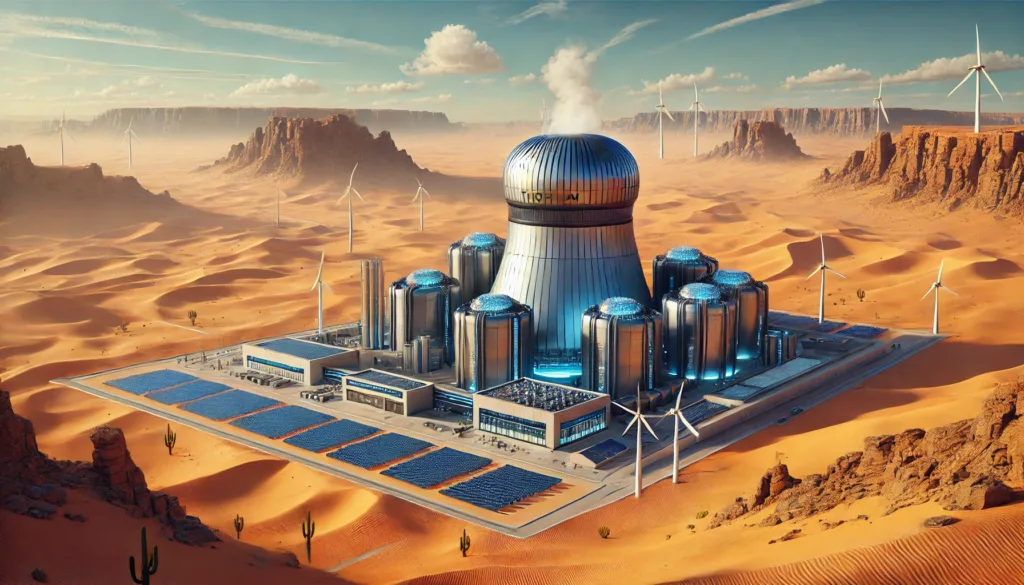Introduction: The Global Energy Dilemma
The world faces a dual challenge: skyrocketing energy demand and the urgent need to curb environmental destruction. Global energy consumption is projected to rise by 50% by 2050, driven by population growth, industrialization, and technological advancements. Meanwhile, climate change accelerates, fueled by centuries of fossil fuel dependence. While renewable energy sources like solar and wind have made strides, their limitations—intermittency, land use, and reliance on rare minerals—leave them insufficient to fully replace coal, oil, and gas.
Nuclear energy remains a potent alternative, but traditional uranium reactors face public skepticism over safety, waste, and weapon proliferation risks. Enter two groundbreaking solutions: fusion reactors and thorium-based fission reactors. Fusion, the “holy grail” of clean energy, remains decades away from practical use. Thorium reactors, however, are emerging as a viable near-term innovation—one that could redefine nuclear power’s role in a sustainable future.
What Are Thorium Reactors?
Thorium reactors use thorium-232, a naturally abundant metal, as fuel. Unlike uranium, thorium itself isn’t fissile. Instead, it’s converted into uranium-233—a potent nuclear fuel—through neutron absorption. These reactors often employ molten salt coolant systems, earning them names like Molten Salt Reactors (MSRs) or Liquid Fluoride Thorium Reactors (LFTRs). This design allows for safer, more efficient energy production compared to conventional reactors.
China’s Pioneering Progress
China is leading the charge in thorium reactor development:
- Experimental Reactor in Wuwei: In 2021, China launched the world’s first thorium-based molten salt reactor in the Gobi Desert. This pilot project aims to test feasibility and safety, with plans to scale up by the 2030s.
- National Ambitions: Backed by government funding, China sees thorium reactors as key to its 2060 carbon neutrality pledge. The technology could also reduce reliance on imported uranium and coal.
- Global Implications: Success here could position China as a nuclear tech exporter, reshaping energy geopolitics.
Advantages of Thorium Reactors
Abundant Fuel: Thorium is 3-4x more common than uranium, with vast deposits in India, Australia, and the U.S.
- Reduced Waste: Produces minimal long-lived radioactive waste, easing storage concerns.
- Inherent Safety: Operates at atmospheric pressure (no explosion risk) and features passive cooling. If overheated, salts solidify, shutting down reactions automatically.
- Weapon Resistance: Uranium-233, the byproduct, is contaminated with uranium-232, making it impractical for bombs.
- Efficiency: Burns ~99% of its fuel vs. uranium reactors’ 1-5%.
Challenges to Overcome
- Technical Hurdles: Molten salt systems face corrosion issues, requiring advanced materials.
- Infrastructure Gaps: No established supply chain for thorium fuel cycles.
- Costs and Regulation: High R&D costs and outdated nuclear regulations (designed for uranium) slow progress.
- Public Perception: Overcoming “nuclear stigma” remains critical.
Practical Implementation: Closer Than Fusion
While fusion reactors remain a distant dream, thorium reactors are already being tested. China’s Wuwei experiment is a critical milestone, and nations like India (with its thorium reserves) and the U.S. are investing in research. If China succeeds, commercial reactors could emerge within 10–15 years, offering a scalable clean energy solution.
Conclusion: A Bright (and Sustainable) Nuclear Future?
Thorium reactors represent a tantalizing blend of innovation and pragmatism. They promise safer, cleaner nuclear power with fewer geopolitical risks—a potential game-changer for nations battling energy poverty and climate chaos. However, technical and regulatory barriers must fall to unlock their full potential.
At MilovanInnovation, we’re committed to tracking this revolutionary technology. From China’s molten salt experiments to global policy shifts, we’ll keep you informed on how thorium could reshape our energy landscape. Stay tuned—the future of nuclear is brighter than ever.
Follow MilovanInnovation for cutting-edge updates on clean energy, tech breakthroughs, and sustainable solutions.


Leave a Reply